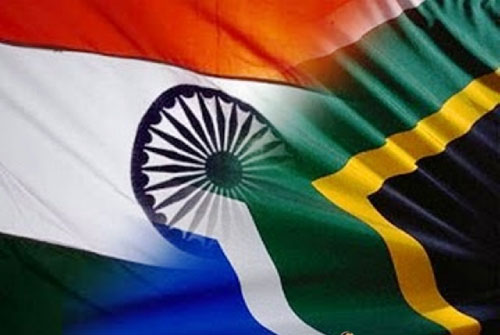Accra, Aug 10 Africa offers India Inc. a $180-billion market by 2025 waiting to be tapped as the one billion people of this 54-nation continent are set to double their net annual spending to over $1.2 trillion by then, as per two recent authoritative studies.
An African Union book, “Africa 2050 – Realising the Continent’s Full Potential”, spells out its vision, while a McKinsey report, “Joining hands to unlock Africa’s potential”, shows how Indian companies can strategise to further their foothold in Africa.
“Africa’s consumer goods market will have more than doubled to around $1.2 trillion by 2025 and 30 cities spread across Africa will witness a consumption growth of more than $2 billion in the next five years,” says McKinskey Asia Centre.
It says Indian companies like Dabur, Godrej, Marico and Emami that have limited presence in Africa’s consumer goods landscape at present, along with others, will stand to gain a lot by strengthening their presence or marking their entry, as the case may be.
“Success for Indian companies in African consumer goods sectors requires long-term brand building, especially brand promise and identity, which is then consistently advertised, balancing quality with price for aspirational products and build consumer trust.”
It also calls for more robust investing in the distribution channels, especially through partnerships, proactive management of supply chain by working with local providers where possible and leveraging the online channel.
In the case of the African Union book, one of its authors, Callisto Madavo, says Africa is at a critical point today and what its leaders do will determine where the continent is headed for, socially and economically, by 2050.
This will determine if the fast-rising aspirations of Africans are met and suggests how to go about this task: “Africa needs capable states that deliver security, have strong institutions, rule of law, and are accountable to their citizens.”
It also identifies 10 common priorities that cut across the continent and argues that realisation of this vision depends ultimately on pragmatic leadership, the quality of governance and how institutions work.
Madavo, who is also a visiting professor in the African Studies Program at Georgetown University in Washington, further says if these are adhered to, the average per capita income of Africans will increase six-fold by 2050.
He also maintains an additional 1.4 billion Africans will join the middle class, even as the number of poor will reduce 10-fold, with Africa’s share of the global gross domestic tripling during this time.
Speaking specifically about India in Africa’s context, McKinskey says the Asian giant’s attempts to tap into Africa’s growing economy has so far been industry-led and suggests its government and its various agencies must collaborate with African counterparts.
It also says the Indian government can review existing bilateral trade agreements in the light of existing circumstances and help build a conducive business environment, while strengthening the tertiary education landscape.
“Indian industry could aspire to achieve $150 to $180 billion by 2025, up from $35-$40 billion in 2013,” it says, adding a 5-10 percent of the market share in consumer goods, IT, infrastructure and agriculture sectors is within reach by 2025.
At the same time, even as some of these sectors offer attractive opportunities, there is the need for a customised approach to overcome challenges — something which India Inc. is well equipped to handle, like the lack of local talent or fragmented market.
Specifically on IT, Mckinskey says although it is a nascent sector in Africa, it has a potential to create jobs, with Africa’s spending in this area set to triple to $80-$95 billion by 2025 — the bulk of it from South Africa, Nigeria, Egypt, Kenya and Ghana.
“Africa could create around 2.5 million new jobs by 2025 if it captures 5-10 percent of the addressable European outsourcing and offshoring markets,” it says, adding potential is in e-governance, banking, security, information management and industry solutions.
Two other areas of growth it mentions are the transport and power sectors. “As Africa’s power sector races to catch up with other emerging markets, it provides a huge growth potential for Indian companies,” it says.
“North Africa’s high electrification rate guides the compass of opportunity there — by 2040, Sub-Saharan Africa’s electricity consumption of around 1,600 TWh will represent a $800 billion opportunity.”
These apart, McKinsey says, the African continent’s untapped agriculture output is also an area that Indian companies can tap into.
“Africa’s aspired ‘green revolution’ can raise its agricultural output from $280 billion in 2010, to around $880 billion by 2030 through the cultivation of new land, yield improvement and shift to high-value crops.”
